RAY MILTON DOLBY
by Joelle Steele
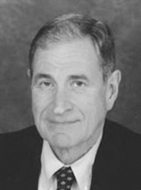 Ray Milton Dolby was born in Portland, Oregon, on January 18, 1933; died of leukemia on September 12, 2013. In 1966, Ray married Dagmar Bäumert and they had two sons, Tom and Dale P. Dolby.
Ray Milton Dolby was born in Portland, Oregon, on January 18, 1933; died of leukemia on September 12, 2013. In 1966, Ray married Dagmar Bäumert and they had two sons, Tom and Dale P. Dolby.
Ray was the son of Earl Milton Dolby (born September 17, 1905; died January 21, 1994 in Redwood City, California) and Esther Eufemia Strand (born February 23, 1907 in Rochester, Washington; died 1999 in Cupertino, California).
Ray and Dale probably inherited their technological abilities from their father. Earl was a surveyor, a mechanical, electrical, and photographic experimenter and inventor. He was also an entrepreneur in different fields. He compiled the first aircraft manufacturing dictionary during World War II. He was also the writer and publisher of several Start Your Own Home Business books. For many years he was a member and officer of the Electric Car Association of San Jose (California). Earl advised his sons Ray and Dale, “Don’t trust the nay-saying experts. You can think of a better way.”
Earl Dolby’s parents were Lotan Robert Dolby (1876-1936) and Edna Debard (1890-?). When Earl was born, his father was 29 and his mother 15. They lived in Seattle, Washington for five years, and in 1940 moved to Compton in Los Angeles County, California. Ray’s mother was Esther Eufemia Strand (born February 23, 1907 in Rochester, Washington; died August 23, 1999 in San Mateo, California). Her parents were August Alfred Carlsson Öberg Strand (born February 19, 1868, died December 10, 1944) and Emma Sofia Kentala (1879-1967), both of Terjärv, Finland.
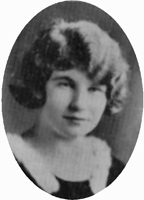
Esther Eufemia Strand
Esther grew up on Independence Road in Rochester directly across the street from the farmhouse of my grandmother, Helny Maria Andersdotter Furu. They were on a large parcel of land on which many community social events were hosted in the area that came to be known as “Strand’s Grove.” Helny’s daughter, my mother Norma Steele, remembered that the Strand children had varying shades of red hair. Up until her death in 1986, Norma kept in touch with Esther and Earl who lived in Cupertino (near San Jose, California).
Esther was the third cousin (3C) of Matts “Matt” Forström (my grandmother Helny’s first husband’s father), and she was the 4C of my grandfather, Anders Joel Mattsson Sandkulla Stål Granö (Joel Steele). My mother Norma, was Esther’s 4C1R, making her my 4C2R, and her son Ray my 5C1R.
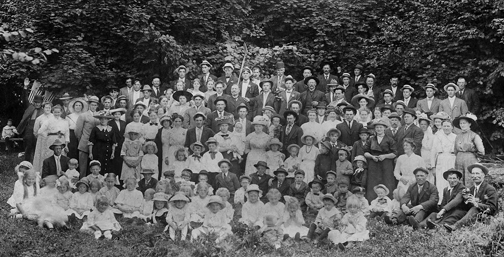
Community Picnic at "Strand's Grove" on Independence Road, Rochester, Washington, ca. 1910.
According to his biographers, Ray Dolby enjoyed sailing, skiing, and flying airplanes and helicopters. In 1949, he began what was probably the single most illustrious careers ever in the field of technology. He went to work for the Ampex Corporation in Redwood City, California. Ampex, founded by Alexander M. Poniatoff, was a pioneer in tape recording equipment that came to revolutionize the radio and recording industries of the time. From 1949-1952, Ray worked on various audio and instrumentation projects for Ampex, including prototypes of video cassette recorder technologies. From 1952-1957, he was responsible for the development of the electronic aspects of the Ampex videotape recording technology. While at Ampex, Ray had been studying at Stanford University in Palo Alto, where he received a bachelor’s degree in electrical engineering in 1957. He then won a Marshall Scholarship and a National Science Foundation Graduate Fellowship, and left Ampex. He moved to England, where he received a doctorate in physics in 1961 from Cambridge University, where he was elected a Research Fellow at Pembroke College. One of the Dolby logos.

During his last year at Cambridge, Ray was a consultant to the United Kingdom’s Atomic Energy Authority. And in 1965, after completing a two-year commission as a technical advisor for the United Nations in India, Ray returned to England where he and his brother Dale founded Dolby Laboratories and invented the Dolby Sound System the same year. The company headquarters was moved to San Francisco in 1974 and Ray followed two years later.
It is virtually impossible to avoid experiencing the technology that Ray invented that forever changed music and movie sound quality, particularly owing to his Dolby Noise Reduction system, since as of 2010, 29,000 movie theaters used Dolby Digital Surround Sound and 850 million Dolby-licensed products had been sold worldwide. Ray, the billionaire entrepreneur, inventor, and founder and chairman of Dolby Laboratories, held approximately 50 patents and thousands of trade names assigned to the Dolby name. He wrote many papers on videotape recording, long wavelength Xray analysis, and noise reduction.
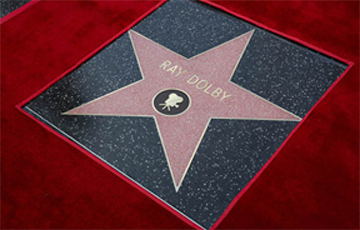 Ray Dolby's star on the Hollywood Walk of Fame.
Ray Dolby's star on the Hollywood Walk of Fame.
Ray received many honors, including Oscar, Emmy, and Grammy awards. In 1997, President Clinton awarded him with the United States National Medal of Technology. That same year, he received the IEEE Masaru Ibuka Consumer Electronics Award, the American Electronic Association Medal of Achievement, and an honorary Doctor of Science from Cambridge University. In 1999, he was awarded an honorary Doctor of the University by the University of New York. In 2004, he was inducted into the National Inventors Hall of Fame. He was also an Honorary Officer of the Most Excellent Order of the British Empire (OBE).
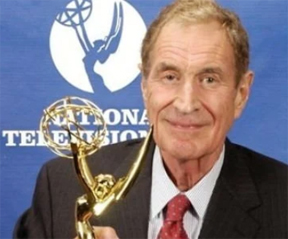 Ray Dolby with one of many awards.
Ray Dolby with one of many awards.
Within his own industry, Ray was a Fellow and past-president of the Audio Engineering Society from whom he received their Silver and Gold Medal Awards. He was a Fellow of the British Kinematograph Sound and Television Society, an Honorary Member of the Society of Motion Picture and Television Engineers and recipient of their Samuel L. Warner Memorial Award. He also received the Alexander M. Poniatoff (founder of Ampex) Gold Medal, the Progress Medal, and the Scientific and Engineering Award of the Academy of Motion Picture Arts and Sciences.

